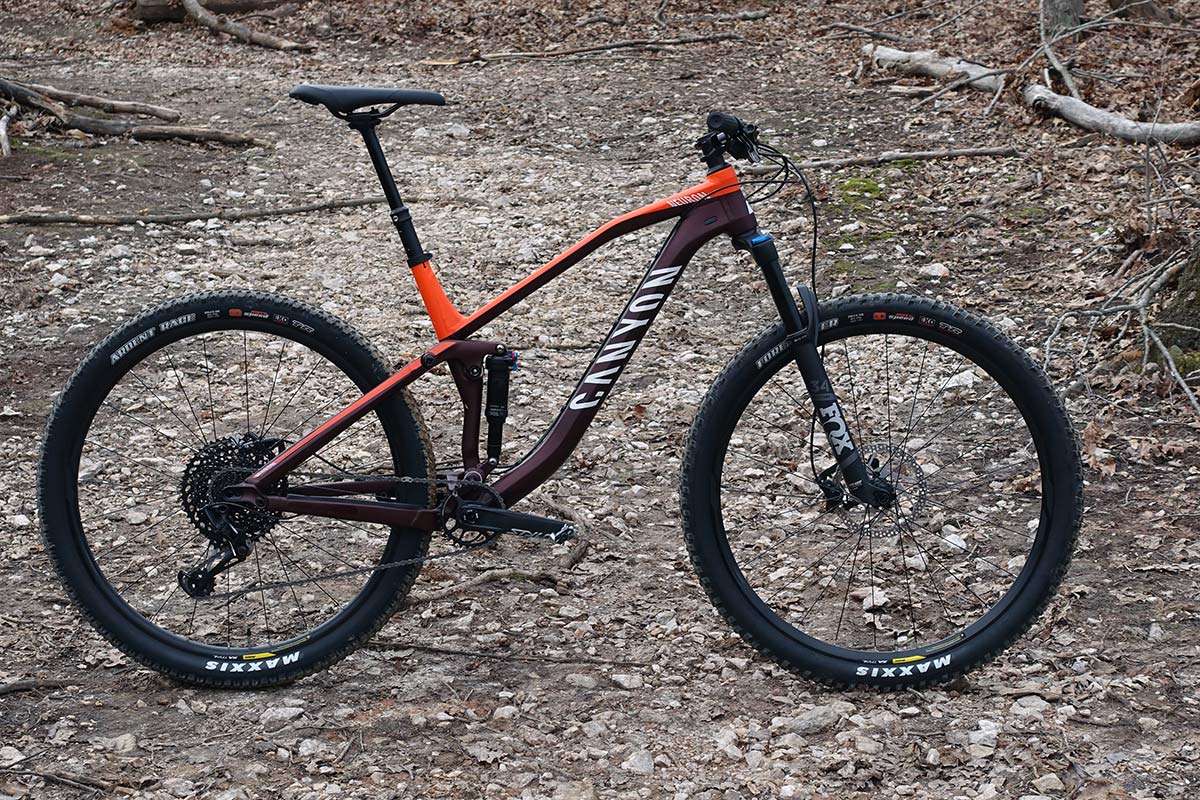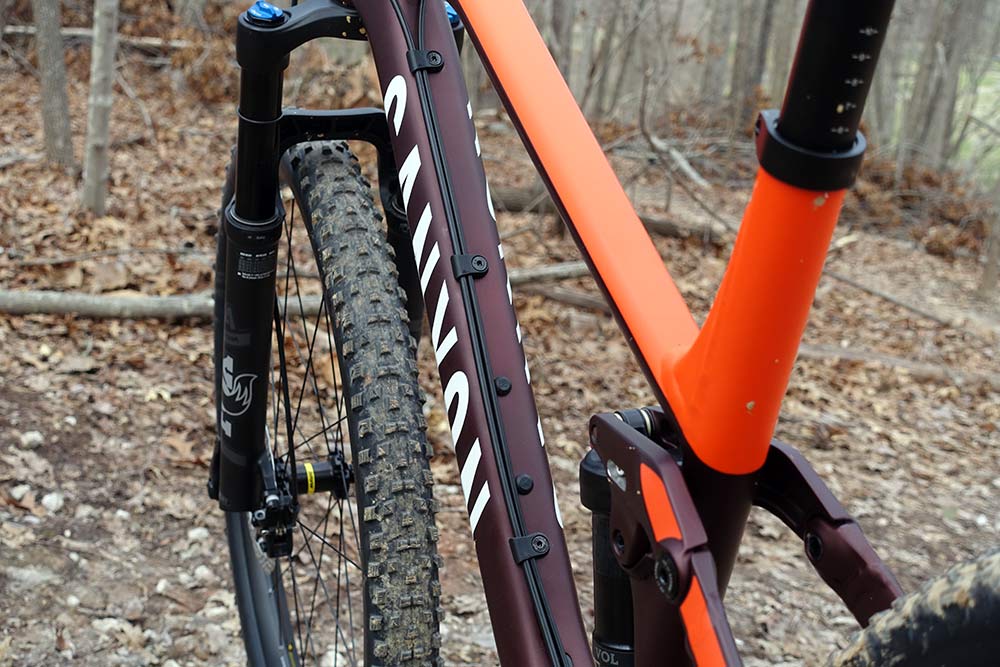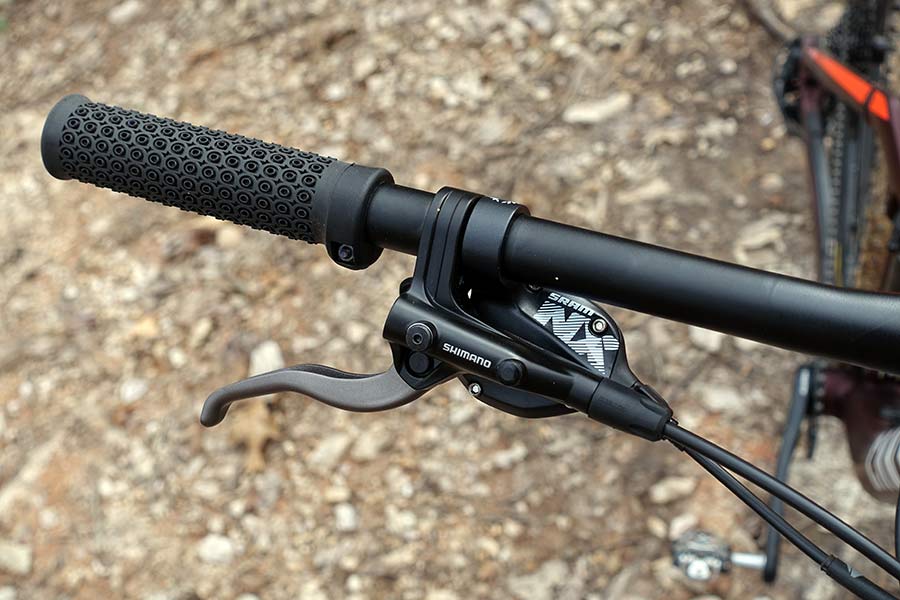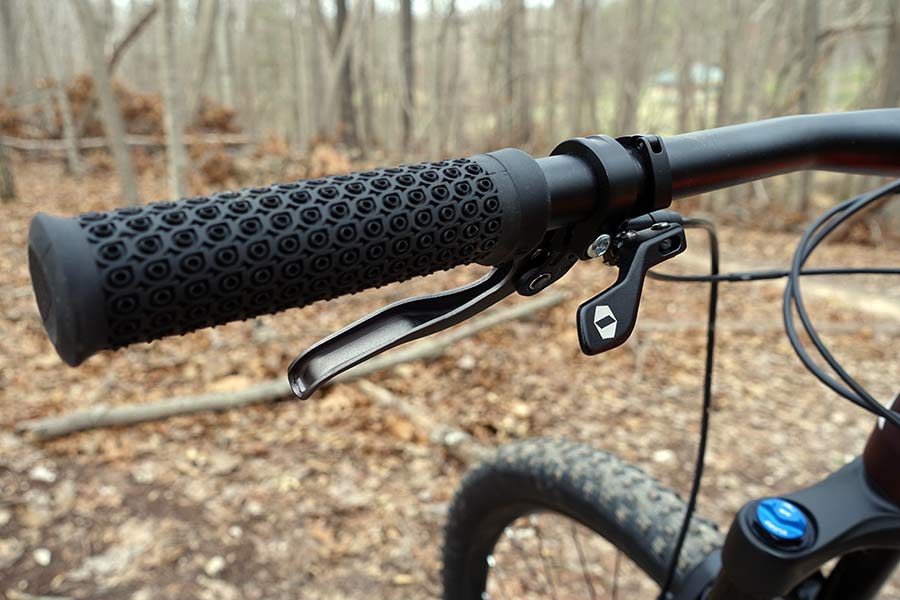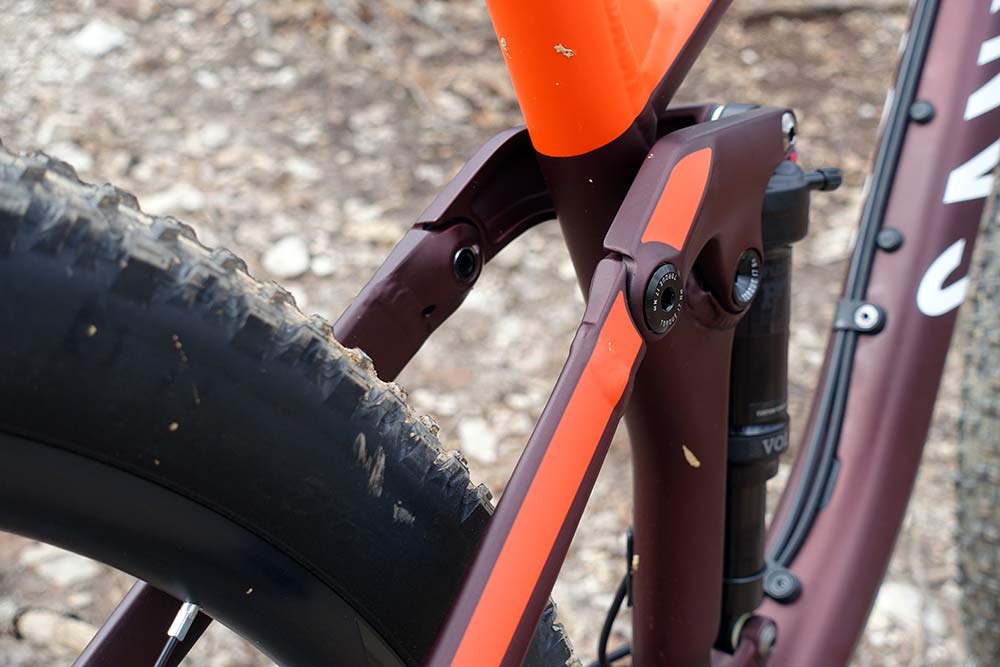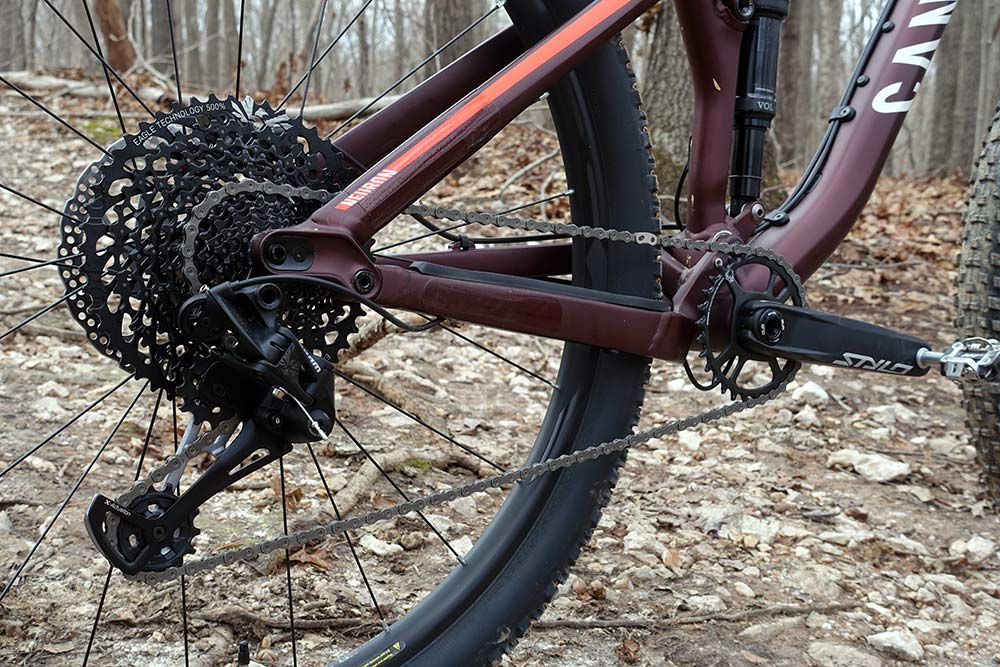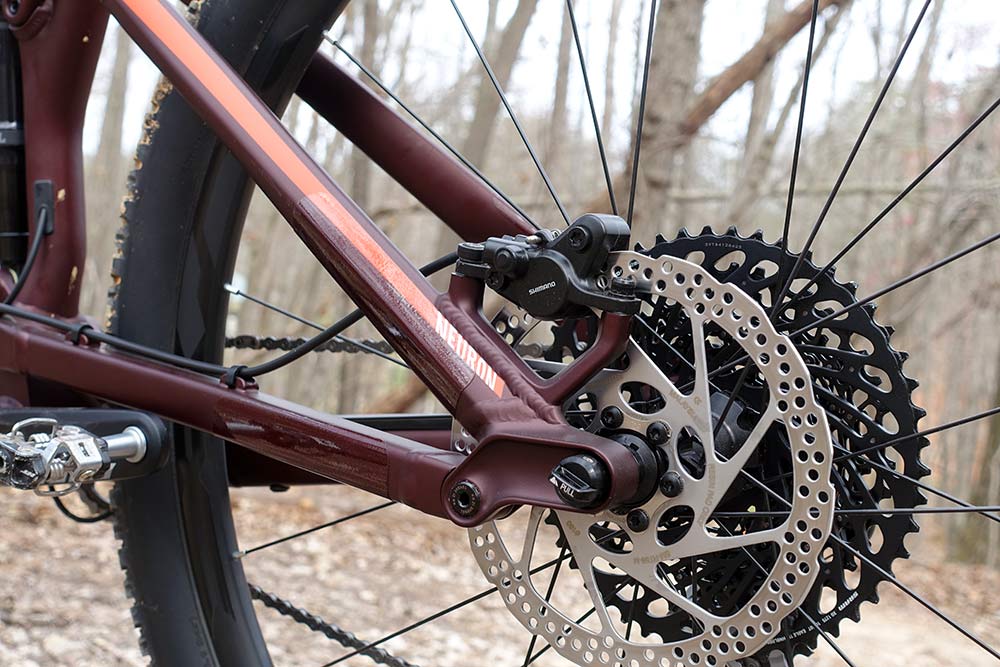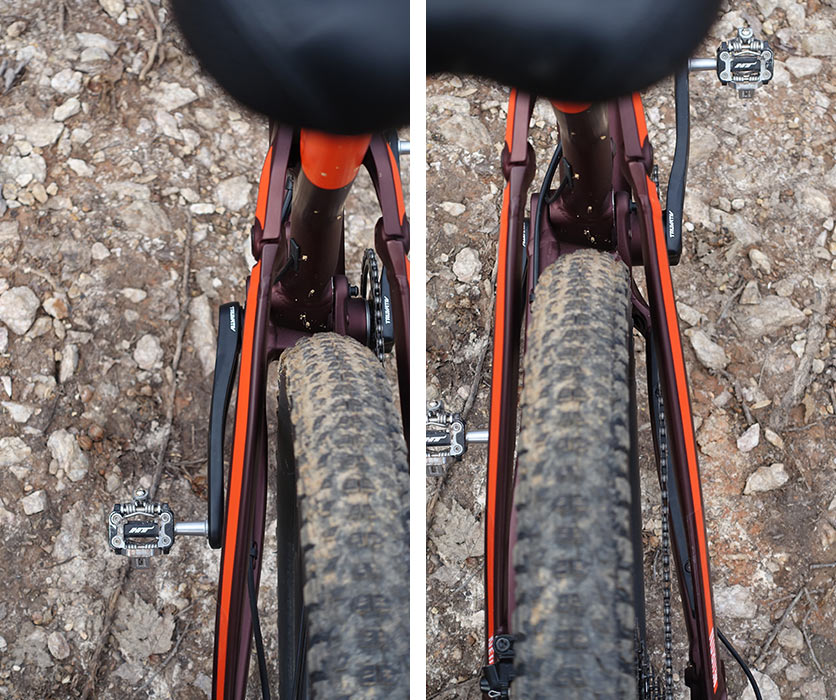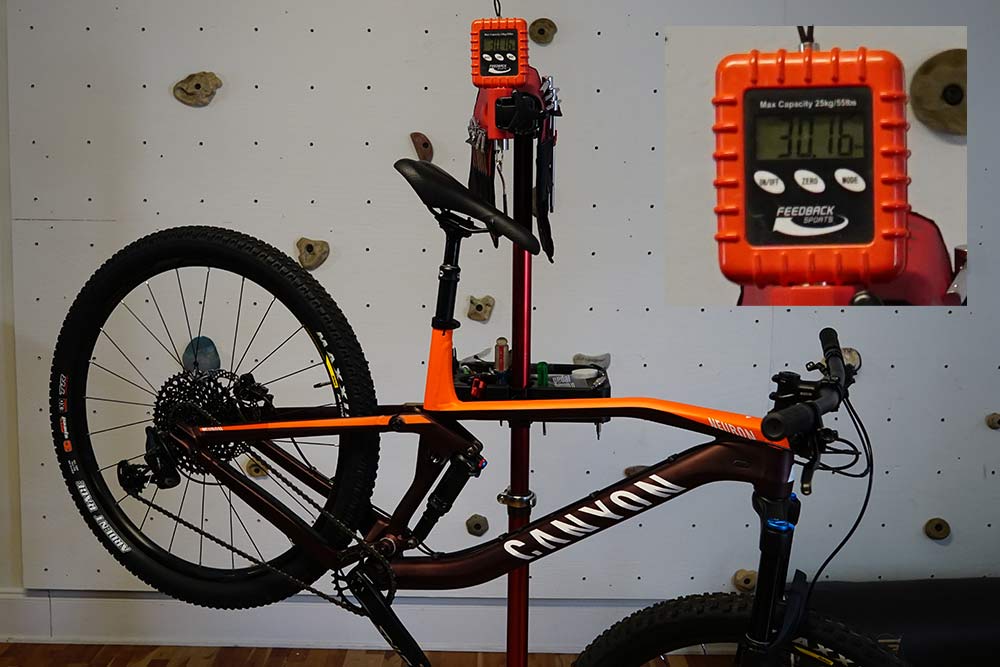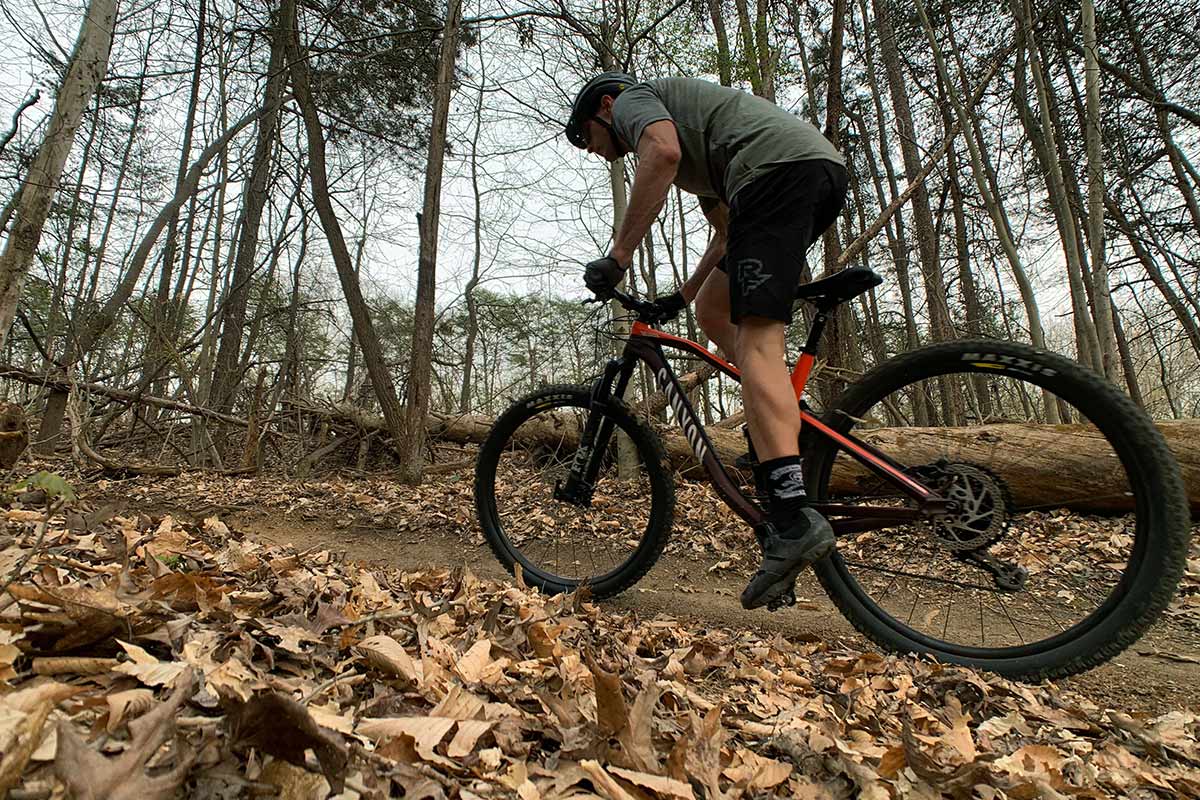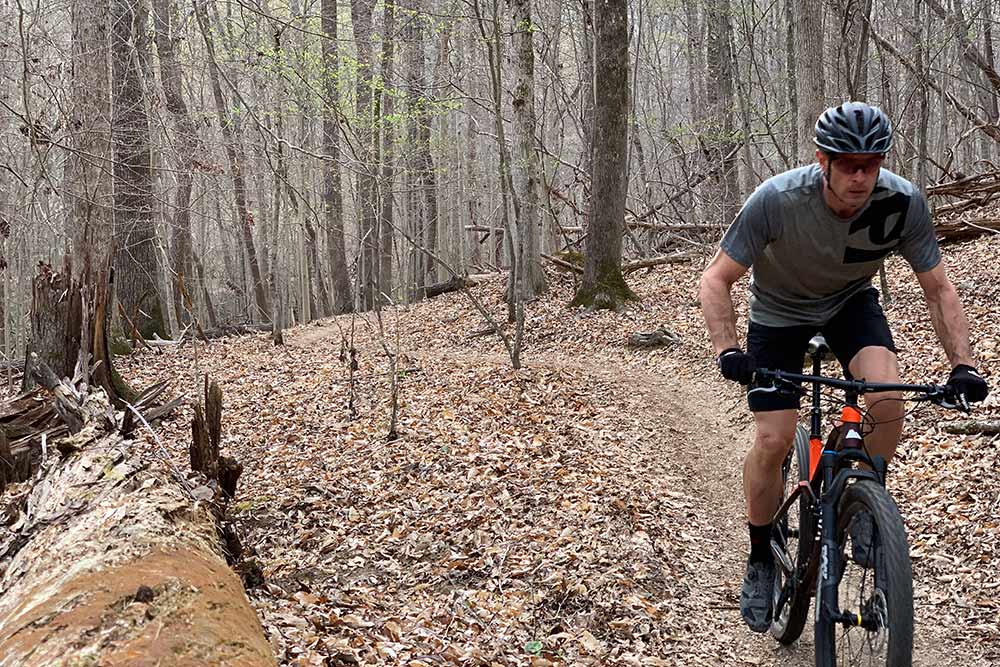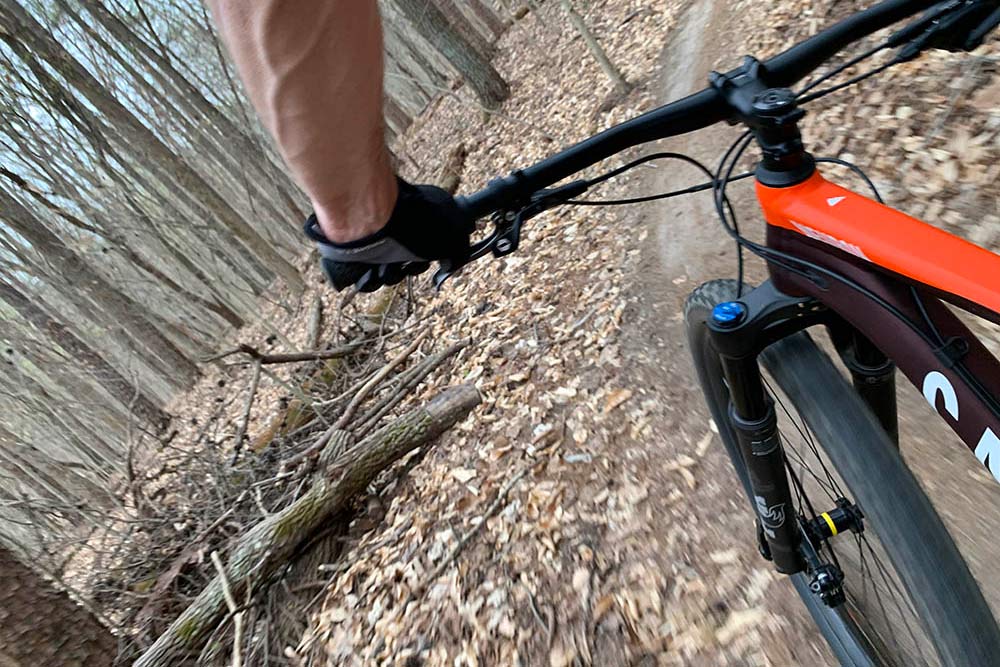The trail bike category is hot, but most of the options are aiming at the aggressive rider that’s looking for big bike performance in a lighter package. The other end of the spectrum is someone looking for a fun bike that handles like a regular mountain bike, perhaps someone coming from XC but looking for more travel. Or someone just getting into mountain biking that really just needs one good bike that can do a lot.
For that, direct-to-consumer brand Canyon Bicycles has the Neuron. Late last year, Zach spent some time on the higher end carbon fiber Canyon Neuron CF. But we wanted to see if the lower priced alloy model could measure up on our local trails. Would it provide the friendly experience it’s designed for without disappointing a more advanced rider?
Tech details & actual weight
The Neuron is a 130mm travel bike that comes in five sizes. The smaller two, XS and Small, use 27.5″ wheels with shorter chainstays and geometry adjusted for smaller riders. The other sizes use 29er wheels, but all sizes use a 29er fork because they liked the way it handled even with the smaller wheels.
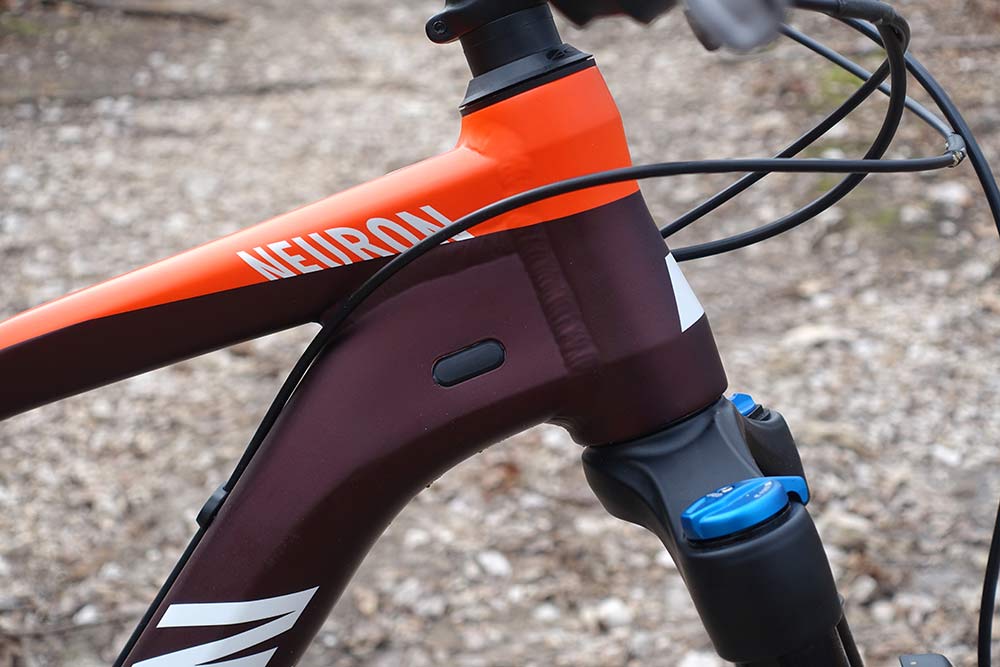
Speaking of sizing…
I felt like I was exactly between sizes. I’m 6’2″ with a 33-34″ inseam and I tested a Large, but have ridden the pedal-assist Neuron ON eMTB in size XL. Between the two, if I were making it my personal bike, I’d lean toward the XL for long term ownership. But it’s close. Both bikes fit and rode well, and I can appreciate the more nimble characteristics of a smaller bike. Any taller than 6’2″ and I’d definitely recommend the XL, though, and any shorter and I’d suggest the Large.
The bike retails for $2,499 USD, which is quite fair considering the base is a very upgrade-worth frame. Parts list at this price are fair, too, with Mavic XA Trail wheels, Maxxis tires, Fox Performance suspension, SRAM NX Eagle drivetrain and Shimano Deore brakes. It also includes a housebound dropper seatpost.
Shift cable run inside the frame, but rear brake and dropper seatpost lines run along the downtube, captured with clips. It’s clean, and it makes for much easier repairs. The dropper post remote enters the seatpost just above the BB, allowing for the tidy look of a modern stealth post.
The SRAM group performed flawlessly, as all of our Eagle test groups have. The Shimano Deore brakes also worked great, but were very firm at the lever. I usually solve this by letting a drop or two of fluid out, but since this was a short term test, I left it alone. But, should your bike have this, it’s worth resolving because I only had to pull the levers a tiny bit to get full stopping power. But when it’s set up like this, they don’t typically provide as much modulation as when the contact point comes in a little later. Unfortunately brakes at this level don’t have all the reach and bite adjustments of higher end models. And, for that matter, neither do the SRAM shifters, so you’re kinda stuck with where those thick bar mounts will sit in relation to one another.
On the plus side, the grips were quite comfortable and did a good job mitigating vibrations. The dropper post worked fine, but the lever was a little mushy compared to some others I’ve used. No dead stroke or anything, just not very direct feeling even if it was doing the job just fine.
The suspension uses an upper rocker link that functions the same as the carbon model, but without the additional bearing shielding and articulating cover plate. It’s all solid looking from the side…
…but it was these upper rear pivots that had me concerned. The stays are small, as are the overall pivot points, especially for a high stress area like this where there’s no seatstay bridge to keep everything moving in sync under hard lateral forces. Fortunately, my fears weren’t realized…the joints performed well and didn’t exhibit any noticeable flex or asymmetric movement out on the trail.
Other nice touches include protective clear decals on the stays and a stealth rear thru axle with hidden lever. Just pull it out and you have a full length lever to use for removal. Slide it in and it’s quite stealth.
The Neuron AL comes with meaty 29×2.35 Maxxis Forekaster and Ardent Race tires, which were perfect for our local dirt and hardpacked, occasionally rooty trails.
Canyon ships their bikes in oversized boxes so that they’re mostly assembled. Just attach the front wheel and handlebar and you’re mostly ready to start setup. Small tags on the derailleur and shock provide guidance, and it comes with an entire box of ownership materials to help…including the tools you’ll need to assemble it.
Considering the target audience for this bike, it’s a good thing that it comes with tubes pre-installed but includes the tubeless valve stems. For those just getting into it, there’s no need to add the complexity of tubeless setup right out of the box…and I kept the tubes in for my month-long test. Which means…
…you could easily drop 1/3 to 1/2 pound off the actual weight of 30.16lb (13.68kg). Claimed weight is 29.5lb (13.4kg) for a size medium, which seems spot on if you removed the tubes. It’s not the lightest bike in the world, but it’s on par with others in this price range. And there’s a lot of low hanging fruit for shedding weight with smart upgrades.
Canyon Neuron AL ride review
I’d best describe the Canyon Neuron AL as an extremely approachable, easy to ride trail bike. The geometry isn’t too aggressive in either direction, making it comfortable with just about anything.
Because it’s not trying to be super slack and low, there’s great bottom bracket and pedal clearance, too. Yet, it never felt “tall” when trying to maneuver it between twisty, tree-lined sections.
The suspension does a great job of supporting the rider. It’s nicely progressive to provide a well cushioned response on bigger hits, drops and G-outs. On several rides, the shock’s O-ring showed that I’d used all the travel, but I never noticed while riding…I never felt anything close to a bottom out.
More advanced riders will eventually want to upgrade to a more sophisticated rear shock and fork to smooth out the little stuff, but the bike did a fantastic job of floating over repetitive root sections without feeling like was just skipping over them. I ran between 30-35% sag, which is more than my normal 25-30%. At 25% sag, the rear suspension felt too firm and wasn’t able to get in tune with the terrain. Which is a similar issue Zach felt on the CF (he also ran lower rear shock pressure than Canyon’s guide suggests).
On seated climbs, there’s no noticeable pedal bob even with the shock set in full open mode. It doesn’t feel sluggish, but also doesn’t feel super snappy. It just moves along as your pedal without any drama.
My only quibble is that the bike is just a tad slow to initiate a turn. And I do mean a tad. I think our relatively flat singletrack made this more obvious than if I’d been riding it where it’s big climbs followed by big descents. It’s not excessively slow, but I found myself trying to start my turns just a fraction of a second early to avoid coming out too wide.
The flip side is that it’s super stable at speed and doesn’t flinch in the long fast sweepers. It’s incredibly easy to hold a line on this bike.
Chainstay length is 440mm (17.33″), which is reasonably short, so I suspect it has more to do with the front end’s geometry and fork offset. That said, the front wheel isn’t pushed out too far or anything, so it’s still very easy to get your weight over it to keep traction while cornering hard.
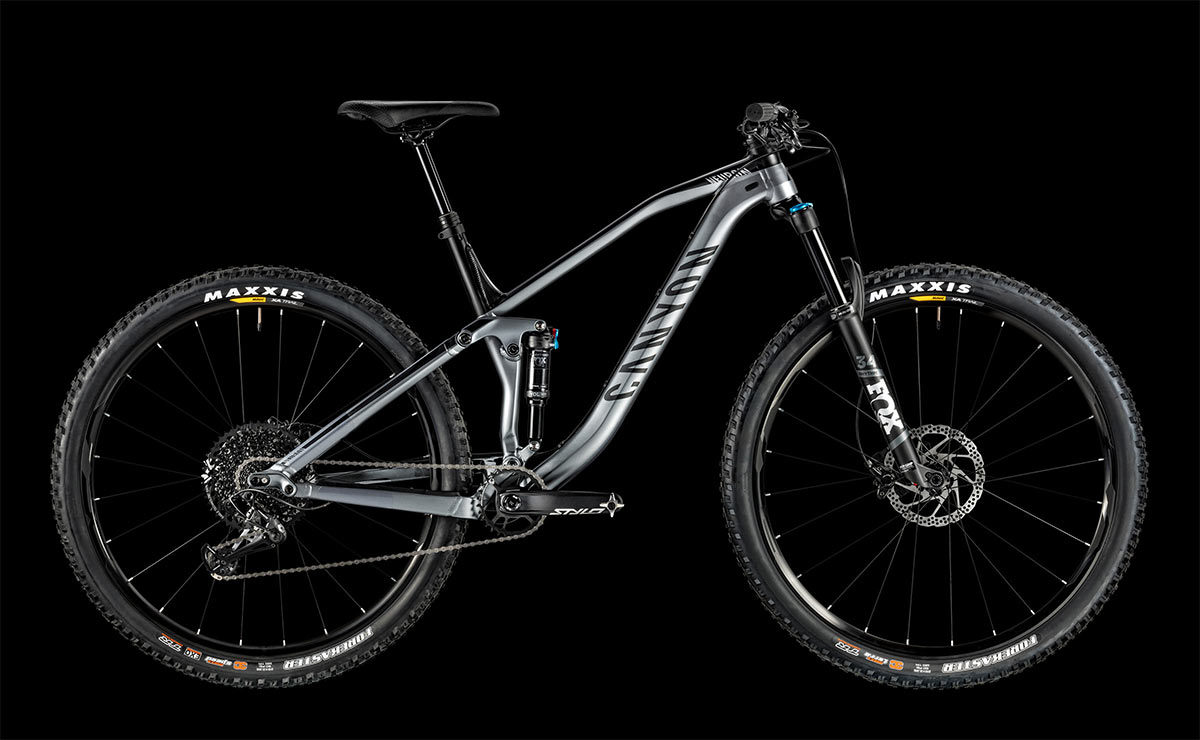
The Neuron AL has good spec for the price, doesn’t leave anything wanting right out of the box for new riders. Even for intermediate riders, there’s nothing that feels like it has to be upgraded right away. But the frame and ride quality make it very much worth upgrading over time. It’s a very fun bike, with confident handling and easy to ride manners. For the target market, I can’t think of anything I change.

